How To Configure Call Queueing And Hold Music?
Updated on 10 Nov, 2024
1. Go to Inbound > Add a New In-group
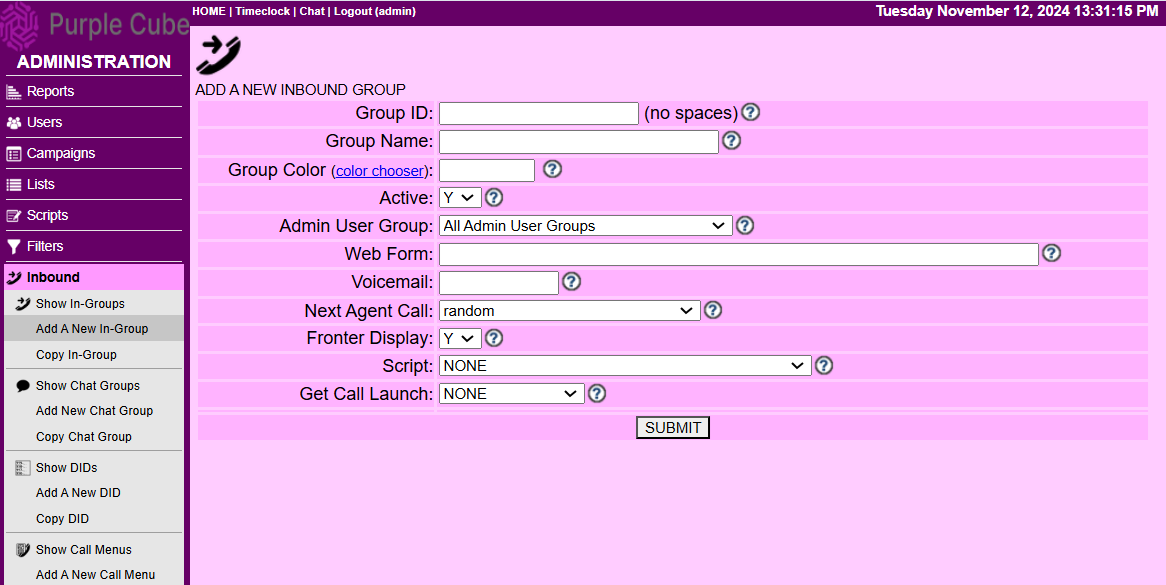
2. The Add A New In-group page display with the following fields to fill:
- Group ID: ID excluding space and between 2 and 20 characters in length
- Group Name: A descriptive name excluding dashes, pluses or spaces and between 2 and 30 characters in length
- Group Color: It displays in the agent client app for differentiate to others
- Active: Available to take call or not
- Admin User Group:permits admin to read this record that is prohibited by user group.
- Web Form: Defines custom web form URL for agent calls. Add &CF_uses_custom_fields=Y for custom fields.
- Voicemail: Set voicemail for drops; assign next agent call.
- Fronter Display: Used in status field when the call comes to the agent.
- Script: Appear on the agents screen for this campaign.
- Get Call Launch: Set auto-launch options for tabs during call connections.
 Note: This will immediately show the Modify A Groups Record Page(i.e., step 5)
Note: This will immediately show the Modify A Groups Record Page(i.e., step 5)3. However, to get access to pre-created but not configured inbound group, go to Inbound > Show In-groups.
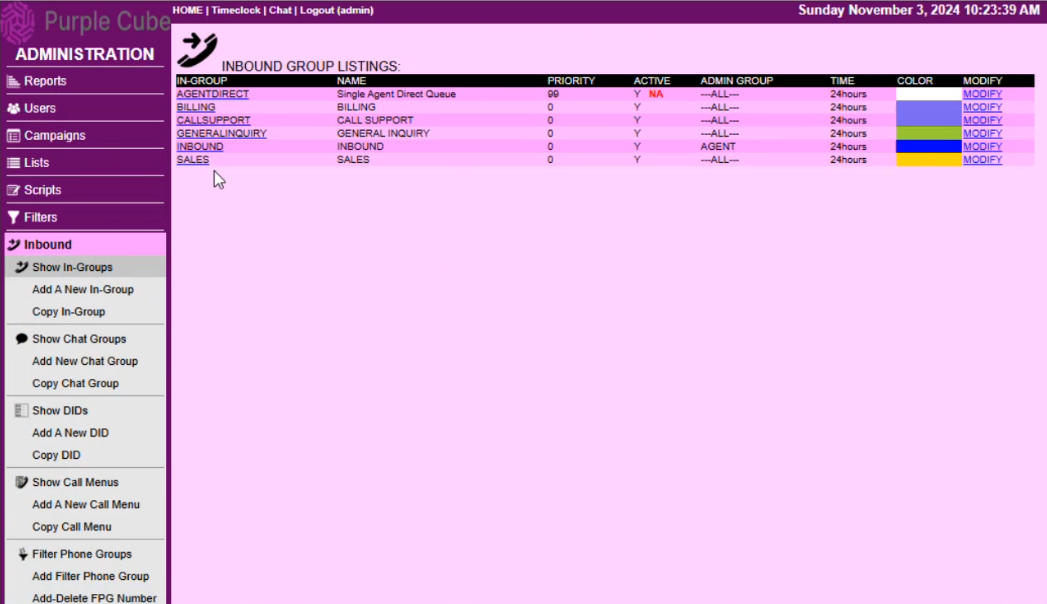
4. A list of existing Inbound Groups will be displayed, including In-Group Id, Name, Priority, Active, Admin Group, Time and Color. Each In-Group may be updated by clicking the Modify hyperlink or the Inbound Group itself.
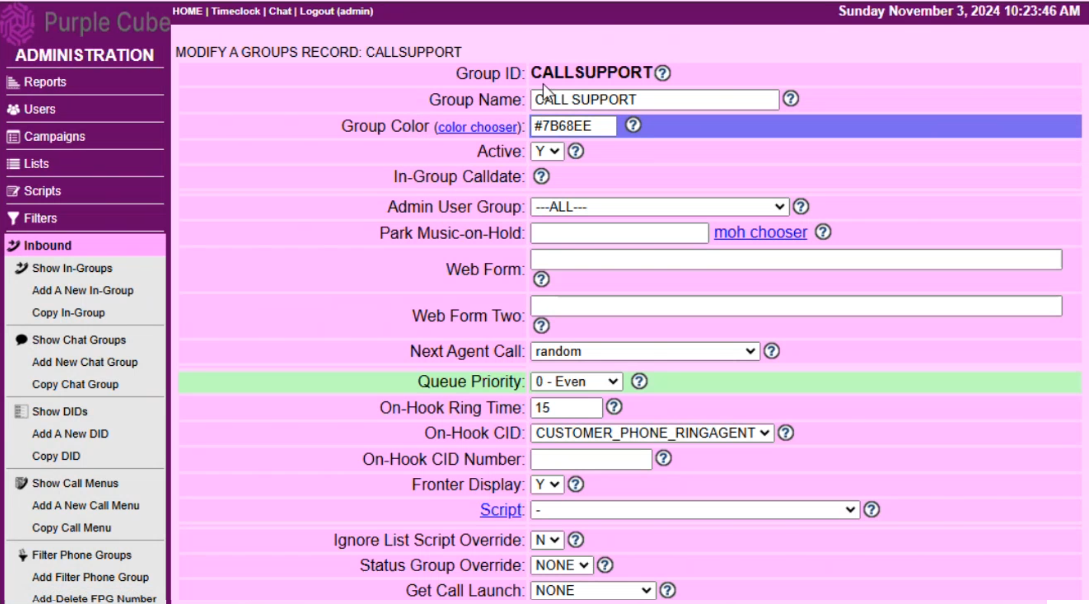
5. In Modify A Call Menu Record page following attribute needs to input:
- Next Agent Call: Methods decide call routing based on agent availability and priorities.
- Queue Priority: Defines the call-answer order between inbound groups.
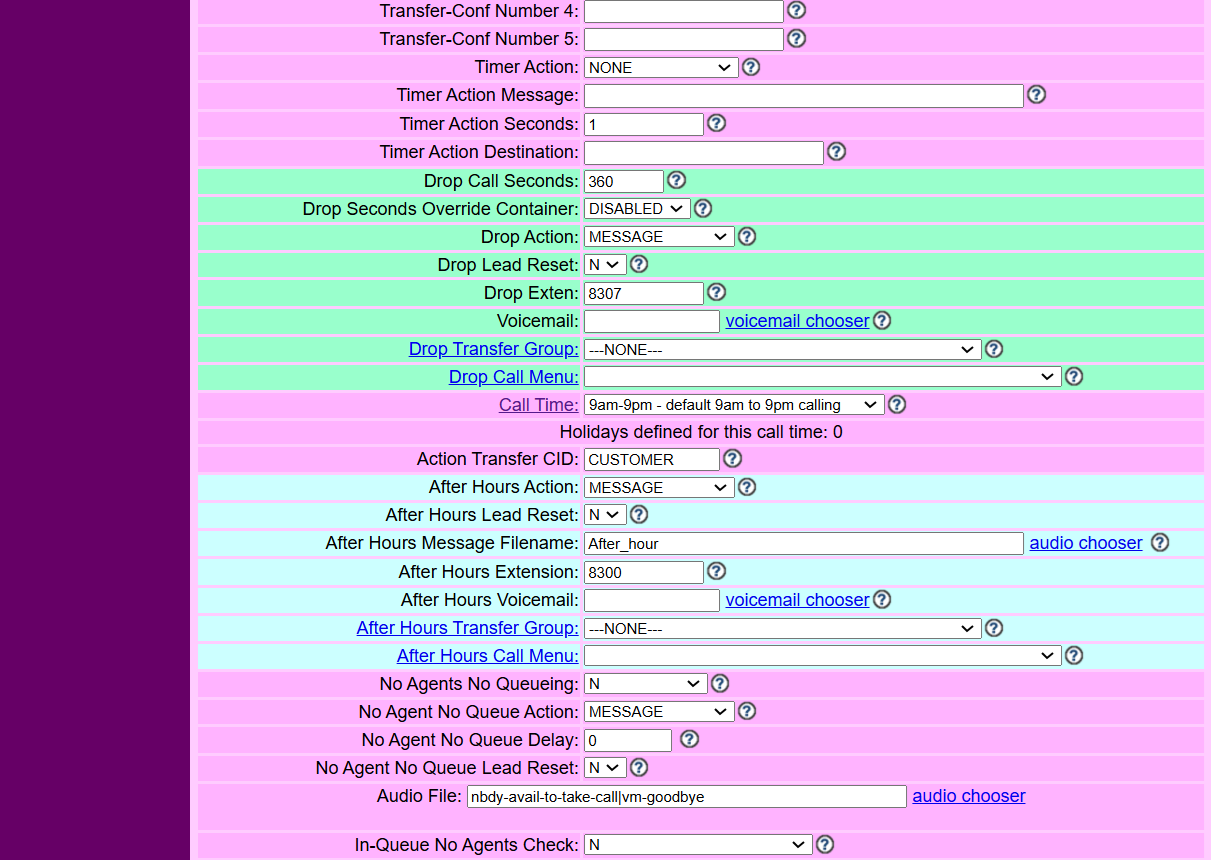
- Drop Call Seconds: Time a call stays in queue before being considered dropped.
- Drop Seconds Override Container: Overrides drop seconds based on day and time range settings.
- Drop Action: Defines actions for calls exceeding the Drop Call Seconds limit.
- Drop Lead Reset: Sets lead called-since-last-reset to N when call is dropped.
- Drop Exten: Defines dial plan extension for MESSAGE drop action at timeout.
- Voicemail: Directs dropped calls to voicemail box or user voicemail ID.
- Drop Transfer Group: Sends dropped calls to specified inbound group after timeout.
- Drop Call Menu: Sends dropped calls to specified call menu after timeout.
- Call Time: Defines the call time scheme based on server time, default 24hrs.
 Note: Are you in need of assistance configuring Call Time? Please READ
Note: Are you in need of assistance configuring Call Time? Please READ- Action Transfer CID: Sets caller ID for Drop, After-hours, and No-agent actions.
- After Hours Action: Defines action for after-hours calls: hangup, message, extension, voicemail, or transfer.
- After Hours Lead Reset: Sets lead called-since-last-reset to N for after-hours actions.
- After Hours Message Filename: Specifies the audio file played for MESSAGE action, default vm-goodbye.
 Note: Are you in need of assistance uploading audio files to the Audio Store? Please READ
Note: Are you in need of assistance uploading audio files to the Audio Store? Please READ- After Hours Extension: Defines dialplan extension for EXTENSION action, default is 8300.
- After Hours Voicemail: Specifies voicemail box for VOICEMAIL action, default AGENTVMAIL for AGENTDIRECT.
- After Hours Transfer Group: Directs calls to specified inbound group if outside call time scheme.
- After Hours Call Menu: Directs calls to specified Call Menu if outside in-group call time.
- No Agents No Queueing: Queue handling depends on agent availability; options manage call routing.
- No Agent No Queue Action: Field controls call queuing based on agent availability and routing.
- No Agent No Queue Delay: Delay before No Agent No Queue check after call arrival.
- No Agent No Queue Lead Reset: Option resets lead's called status when No Agent action occurs.
- Audio File: Specifies the audio file played for No Agents No Queueing action
- In-Queue No Agents Check:Field controls queuing based on agent status; handles paused exceptions.
- In-Queue No Agents Pause Exceptions:Specifies pause codes list for NO_PAUSED_EXCEPTIONS in queue management.
- Areacode Filter: Filters queued calls by customer areacode; allows or drops based on list.
- Areacode Filter Seconds: Sets delay in seconds before executing the Areacode Filter feature.
- Areacode Filter Action: Defines action for dropped calls when Areacode Filter is enabled.
- Audio File:Specifies the audio file played for Areacode Filter action
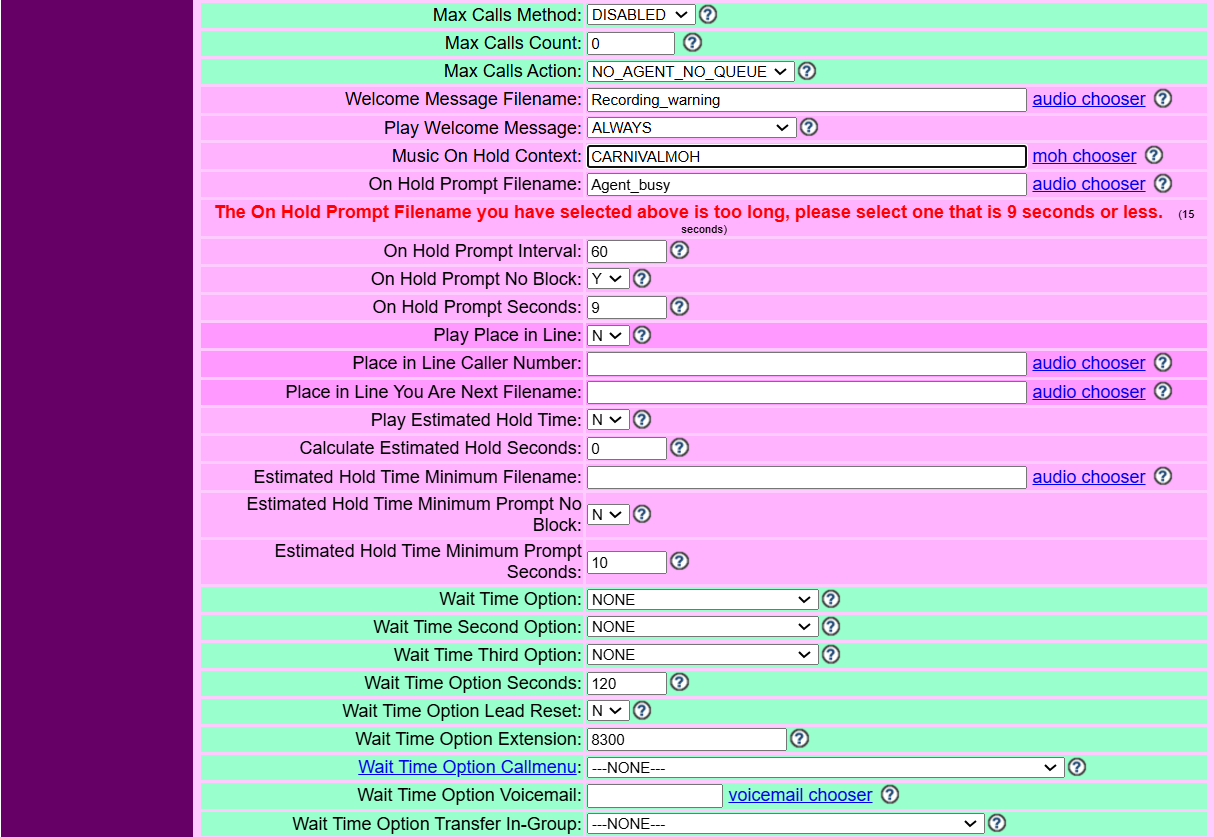
- Max Calls Method: Option limits concurrent calls or queued calls based on settings.
- Max Calls Count: Sets value for enabling Max Calls Method feature; default is 0.
- Max Calls Action: Action taken when Max Calls exceeds limit; defaults to NO_AGENT_NO_QUEUE.
- Welcome Message Filename: Specifies the audio file played to Welcome client
- Play Welcome Message: Controls when to play the welcome message based on call conditions.
- Music On Hold Context: Specifies music on hold context for customers placed on hold.
 Note: Do you need help configuring the music on hold context? Please READ
Note: Do you need help configuring the music on hold context? Please READ- On Hold Prompt Filename: Defines hold music file; must be 9 seconds or less in length.
- On Hold Prompt Interval: Time before on-hold prompt plays; set to 0 to disable.
- On Hold Prompt No Block: Allows calls to be sent to agents while on-hold prompt plays.
- On Hold Prompt Seconds: Sets duration for On Hold Prompt; must match audio file length.
- Play Place in Line: Determines if caller hears their queue position.
- Place in Line Caller Number: Defines audio prompt for customer’s position in queue if enabled.
- Place in Line You Are Next Filename: Defines audio prompt for "next in line" notification when enabled.
- Play Estimated Hold Time: Option defines whether caller hears estimated hold time before transfer.
6. Click Submit
Did this article help?